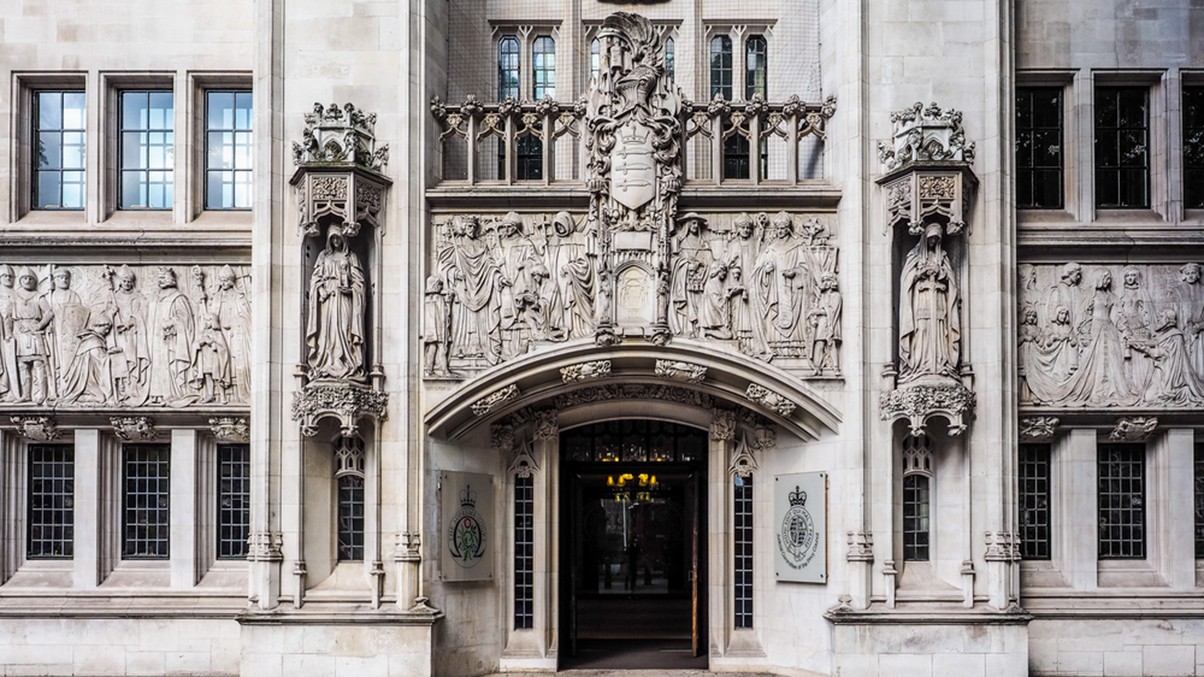Since the commencement of the FCA test case in June 2020, English Covid-19 business interruption (BI) litigation has so far focused on matters of coverage (whether policies respond at all to losses caused by the UK government’s response to the pandemic), rather than issues of quantification (to what extent insurers are liable where coverage is established.)
On 17 October 2022, judgment was handed down simultaneously in Stonegate v MS Amlin & ors, Greggs v Zurich and Various Eateries v Allianz, each of which turned on a number of common issues going to quantification of Covid-19 BI losses. The proceedings were not consolidated, but were heard in quick succession by the same judge, Mr Justice Butcher. The parties to each action had permission to file limited submissions in the other cases.
These BI claims were brought by three large hospitality businesses, under the Marsh Resilience wording. Coverage was not in dispute. The cases explored three core issues regarding quantification of business interruption coverage, generally and in the context of Covid-19:
- Aggregation – how were the wide-ranging losses suffered by each of the policyholders to be aggregated for the purpose of applying the policy limits and deductibles?
- Causation – for how long after the policy period did losses continue to be proximately caused by covered events occurring during the policy period, and therefore how long was the relevant indemnity period?
- Government Support – were insurers entitled to make deductions from the BI indemnity calculation in respect of financial support provided by the UK government’s CJRS (‘furlough’) and Business Rates Relief schemes?
While still subject to appeal and therefore not yet final, the first instance judgments in the three cases represent the most detailed authorities so far on these issues. This three-part series by Aaron Le Marquer and James Breese examines the reasoning behind each of the core issues, considers the broader coverage implications, and looks forward to forthcoming developments that will test the remaining unresolved issues.
In part one we consider aggregation.
Aggregation – the issue
Aggregation of losses for the purposes of applying policy limits and deductibles is a perennial point of dispute between policyholders and insurers (and perhaps even more so between insurers and reinsurers).
Key cases have considered the aggregation of losses arising from the capture of 15 aircraft (Kuwait Airways v Kuwait Insurance), the 9/11 Twin Tower attacks (Aioi Nisssay Dowa v Heraldglen), and damage caused by rioting at 67 supermarkets across Indonesia (Mann v Lexington). More recently the Court of Appeal determined in Spire v RSA that losses arising from over 750 claims against a negligent surgeon were to be aggregated as arising from a single “original cause”.
In the Covid-19 BI context, where policyholders may have suffered losses at multiple locations over an extended period of time arising from a panoply of governmental actions, the aggregation of losses under the policy wording in question can make the difference between a nominal and a material recovery. The point is most starkly illustrated in the case of Stonegate, where the claimants sought to recover total losses of over £1.1 billion suffered at 760 pubs, but where insurers sought to apply a single aggregate limit of £2.5m to their liability for Business Interruption Loss.
The insurers’ case(s)
The insurers’ primary case was that all of the policyholders’ losses “arose from, were attributable to, or in connection with” a single occurrence, and were therefore subject to a single of £2.5m for Business Interruption Loss.
It was already clear from the Supreme Court’s consideration of causation in the test case that every incidence of Covid-19 in the UK represented an “occurrence” for the purposes of the policy wordings in question, and that the pandemic was itself not an “occurrence” but an “originating cause”.
Insurers’ arguments that the policyholders’ losses all aggregated to a single occurrence may therefore appear to have been ambitious, and perhaps for that reason the insurers collectively presented no less than 48 alternative cases on aggregation. Many of the insurers’ candidates for a single occurrence were variations on a theme, and were organised by the court into broad categories:
- any one single case of Covid-19 in the vicinity;
- the initial outbreak in Wuhan;
- the ‘virology options’ (identifying a specific mutation or transmission of the virus in its early stages);
- the ‘tipping point’ cases (the point at which the pandemic became inevitable); and
- the governmental response.
The policyholders’ case(s)
The policyholders’ primary case was that there was no single occurrence to which their losses were connected, and therefore that there was effectively no aggregation or application of the £2.5m limit. Alternatively the policyholders argued that at most the losses aggregated on a ‘per government action, per premises’ basis, so that multiple limits of £2.5m were available to meet the losses.
The decision
The insurers’ primary case on aggregation, ie that the policyholders’ losses all aggregated to a single occurrence, was emphatically rejected by the court. Each of the alternative pleaded occurrences either did not meet the ‘unities’ test, or was found to be too remote from the losses being claimed.
At the other end of the spectrum, the court was also unpersuaded by the policyholders’ argument that the losses aggregated on a ‘per premises’ basis, at least in part because in each of the three considered cases there was only a single insured entity and the policy was not a ‘composite’ one of the type examined in Corbin & King v Axa.
Mr Justice Butcher accepted, however, that the policyholders’ losses aggregated to multiple occurrences, specifically each of the government measures that had led to loss, and concluded in particular that:
- The decision at the 16 March 2020 COBRA meeting, that the public should be advised to avoid pubs, restaurants and clubs, was the first relevant occurrence (but “if he was wrong”, that the announcements on the same date in England, Scotland and Wales amounted to three occurrences);
- There were a number of further occurrences as government advice evolved in quick succession between 16 to 20 March 2020;
- The instruction to pubs and restaurants to close on 20 March 2020 was a single occurrence (but “if he was wrong” again, that the instructions in the three nations were three separate occurrences);
- From May 2020 onwards the divergent approaches of the devolved nations dictated a more granular approach to aggregation, and there were an increasing number of more localised occurrences to which losses would aggregate.
It may be notable that the court’s decision sits at the narrow intersection of the parties’ respective ranges of alternative cases. In each case, both sides had put forward one or more cases recognising government actions as relevant aggregating occurrences for the purpose of the SBIL definition, and that was the fundamental conclusion on which the court’s ruling on aggregation was built.
Comment
Aggregation is a complex and easily misunderstood area, and there are several immediate points to note about the Stonegate and concurrent judgments.
Firstly, this is not an issue with a binary outcome. It would be artificial to characterise the outcome on aggregation as an outright ‘win’ for either insurers or policyholders generally, since the beneficiary of the ruling in any given case will depend entirely on the factual matrix and structure of limits and deductibles. The difficulty with applying the underlying principle of aggregation by government action to the facts is demonstrated by the uncertainty of Mr Justice Butcher’s conclusions around the number of relevant aggregating occurrences between 16-23 March 2020, which leave ample room for further debate over the correct application of the limits of liability.
Nonetheless, if one key general takeaway can be drawn from the aggregation ruling, it is that that many policyholders who have been paid a single limit of liability in respect of their Marsh Resilience Covid-19 BI claims will now have the opportunity to pursue a claim for further losses. Policyholders whose policy periods continued for an extended period following the onset of the pandemic (in some cases well into 2021) may well find that that the value of their recoverable loss has now increased many times over.
Secondly, the Stonegate ruling will have relevance – but may not produce the same outcome – to aggregation under other policy wordings. It is now clear that in the absence of “originating cause” or similar aggregating wording, insurers will not be entitled to aggregate Covid-19 BI losses to a single occurrence.
Importantly, the judgment does not displace Mrs Justice Cockerill’s conclusion on the issue in Corbin & King v Axa earlier this year. In that case, the limit of liability under a non-damage, denial of access (NDDOA) clause was stated to apply ‘any one claim’ and was found to apply to each of the insured premises individually (and per government action). This was on the basis both that the policy was a composite one that insured multiple separate entities owning separate premises, and that the cover itself (with a one-mile radius requirement) was clearly specific to each of the premises. Mr Justice Butcher’s conclusions on triggers/”Covered Events” and aggregation in the Stonegate cases are entirely consistent with the ruling in Corbin & King.
While the Stonegate judgment represents the most detailed examination of the aggregation issue in the Covid-19 BI context so far, and Mr Justice Butcher’s reasoning will undoubtedly inform the consideration of aggregation under other wordings (as well as in the context of reinsurance), it is inevitable that textual and factual variance will produce different outcomes. In that respect, setting aside the prospect of appeals, the Stonegate judgments will not be the last word on BI aggregation.
Part two of this series will examine the court’s treatment of the causation issue.
Covid-19 Business Interruption Litigation Update Webinar – Stonegate and Beyond
On 8 December 2022, Aaron Le Marquer and James Breese presented a webinar on Lexology looking at Covid-19 business interruption decisions in England and Wales following the conclusion of the FCA test case, as well as identifying upcoming litigation intended to address outstanding issues. You can watch a recording of the webinar in full here.
You can find further information regarding our expertise, experience and team on our Policyholder Disputes pages.
If you require assistance from our team, please contact us.
Subscribe – In order to receive our news straight to your inbox, subscribe here. Our newsletters are sent no more than once a month.







